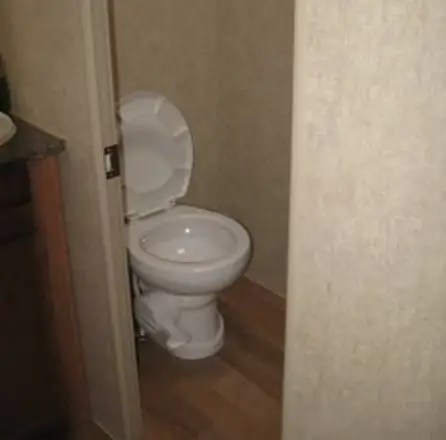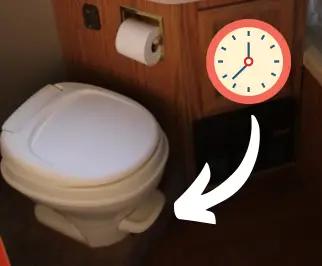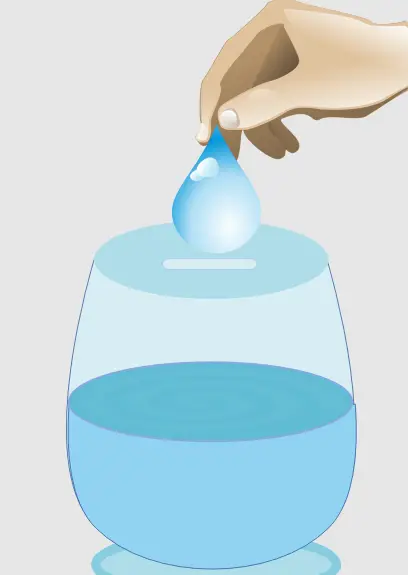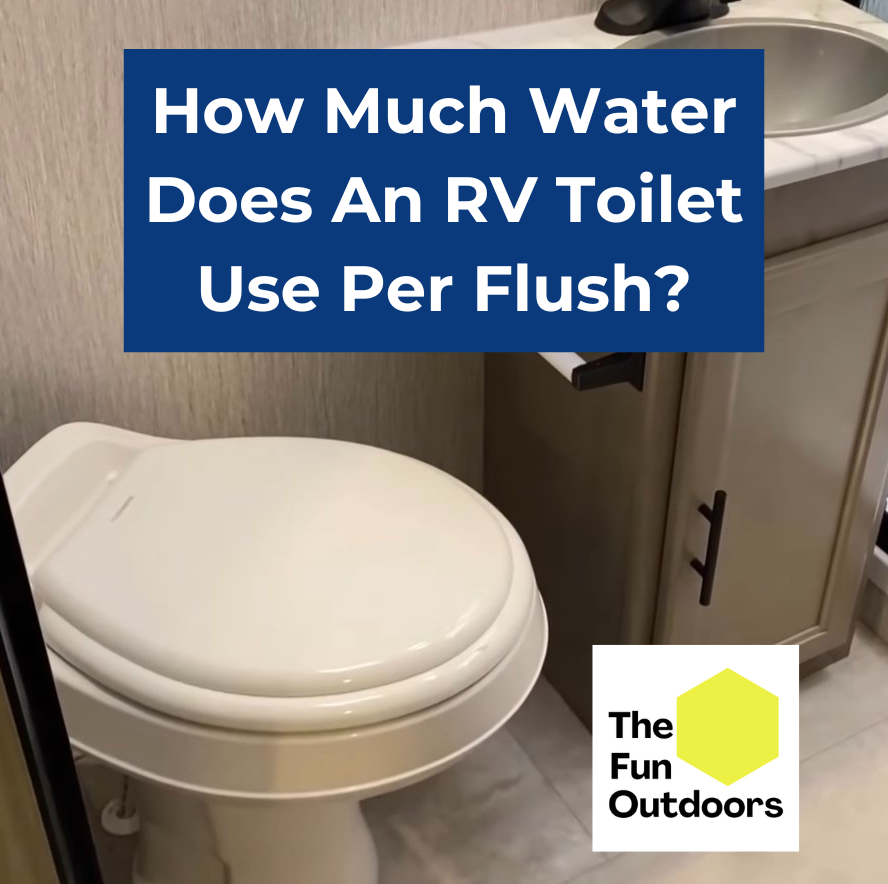When you’re planning your next RV adventure, one key factor to consider is water conservation, especially when it comes to using the RV toilet. Doing so will also keep you from having to empty your black water tank as often. So how much water does an RV toilet use per flush?
The average RV toilet uses between ⅓ to 1 gallon (1 to 4 liters) per flush. The actual amount of water used for each flush varies based on how long you press the RV toilet foot pedal or button down.
⅓ gallon of water is fine to flush liquid waste, but it’s recommended to use up to 1 gallon of water to flush solid waste to avoid build-up in the black tank.
Alternative options, such as composting toilets, do not require any water for “flushing,” making them an eco-friendly and water-saving choice for your RV.
Knowing how much water your RV toilet uses per flush can help you better manage your water supply and ensure a comfortable trip. So let’s dive into the specifics of RV toilet water usage.
How Much Water Does An RV Toilet Use Per Flush?

As an RV owner, it’s essential to know how much water your RV toilet uses per flush. This knowledge can help you conserve water, especially when you’re on an extended trip. So, how much water does an RV toilet use per flush? An RV toilet uses about one-third to one gallon of water per flush. However, some low-flow models can use as little as 16 to 20 ounces of water per flush.
When you depress the foot pedal of an RV toilet, it opens the blade valve, allowing the contents from the toilet bowl to drain into the blackwater tank. Simultaneously, fresh water from your supply fills the bowl to rinse and clean it. The actual volume of water per flush largely depends on how long you press the foot pedal. Using less water is highly encouraged to prevent your blackwater tank from filling up too quickly.
It’s crucial to remember that not all RV toilets work the same way. For instance, an electric flush RV toilet relies on a motor to fill and drain the toilet bowl instead of a foot pedal. However, the average water usage for electric flush RV toilets remains consistent, using around 1/2 to 1 gallon of water per flush.
If your RV toilet isn’t holding water, you’ll need to address this immediately as well.
How Long Should I Hold My RV Toilet Foot Pedal Down?

When it comes to using an RV toilet, understanding how long to hold the foot pedal down is essential for managing your water usage. Don’t worry – it’s very straightforward.
To fill the toilet bowl with water, gently press the foot pedal down. Ideally, you should fill the bowl with just enough water to comfortably handle your needs. Aim to be a bit conservative with water usage, as RV water supply can be limited.
The duration you hold the foot pedal down when flushing is important. For liquid waste, hold the foot pedal down for about two to three seconds, using around 16 oz of water per flush.
For solid waste, you may need to hold the pedal down a bit longer, around three to five seconds, until the waste is flushed, using up to 1 gallon of water. This helps prevent solid waste buildup in the black tank and keeps a dreaded poop pyramid from forming.
Keep in mind, though, that every RV toilet model might have slight differences in flush time and water usage. So familiarize yourself with your RV toilet’s specific model and its quirks.
Overall, if you pay attention to water conservation and proper flushing techniques, your RV bathroom experiences should be smooth sailing!
How To Save Water Using An RV Toilet

Only Flush Solid Waste
While boondocking or free camping, it’s essential to conserve water as much as possible. One way to save water in your RV is by only flushing solid waste. Think of the old adage “If it’s yellow, let it mellow, if it’s brown, flush it down.”
This helps reduce the water consumption from your freshwater tank. For liquid waste, use a designated container and empty it in an appropriate waste disposal area.
Use Campground and Public Toilets When Possible
Another useful strategy to conserve water in your RV toilet is to use campground and public toilets whenever you can. This not only reduces your freshwater tanks’ consumption but also minimizes the need to empty your black water tanks.
When you plan your trips and stops, look for locations with restroom facilities to help save on water usage.
Use A Composting Toilet
Consider installing a composting toilet in your RV. These toilets don’t use water for flushing and instead rely on a dry, composting process to break down waste.
Composting toilets are not only environmentally friendly, but they also help you save a significant amount of water while boondocking or during free camping trips. Additionally, they eliminate the need to deal with black water tanks altogether.
See our related guides on common RV toilet questions from our readers:
How much weight can an RV toilet hold?

